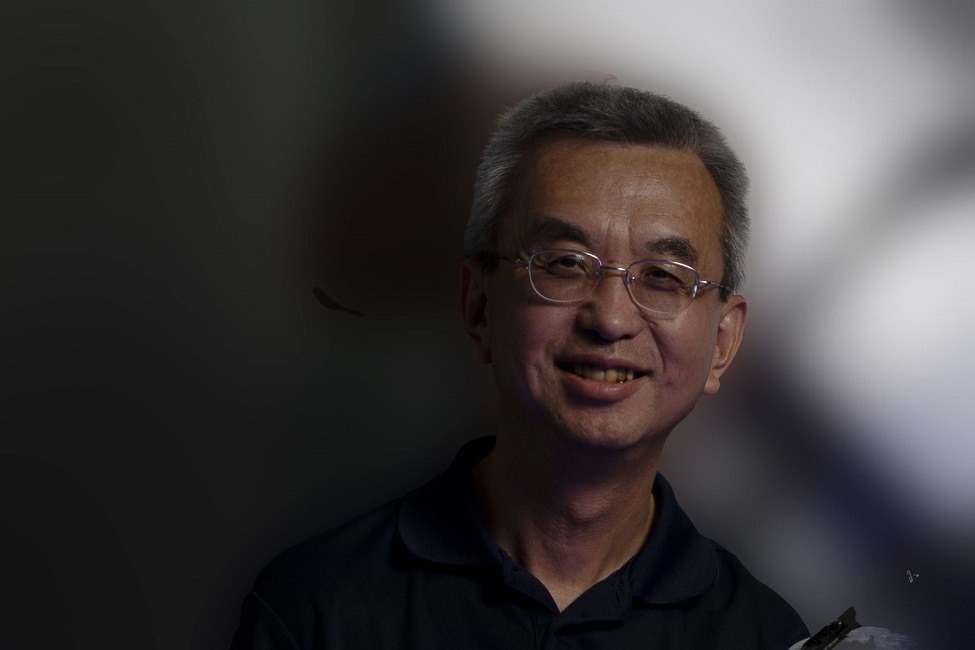FAU Researcher Receives U.S. Patent for Underwater Imaging Device

Bing Ouyang, Ph.D., an associate research professor at Florida Atlantic University’s Harbor Branch Oceanographic Institute. (Photo by Alex Dolce)
Underwater imaging plays a critical role in many fields such as marine exploration, oceanographic engineering, environmental protection and identifying dangerous objects on the ocean floor. However, in turbid or turbulent waters, image quality is often severely degraded due to the complexities of the underwater environment and equipment limitations.
Underwater captured images often suffer from contrast loss because light is scattered and absorbed as it travels in water, resulting in major degradation of detail and distorted or blurred images.
A new invention about the size of a soda can is a potential gamechanger in advanced underwater imaging technology. Bing Ouyang, Ph.D., an associate research professor at Florida Atlantic University’s Harbor Branch Oceanographic Institute, and colleagues, have received a patent from the United States Patent and Trademark Office for this innovation designed to overcome current technical issues related to underwater imaging.
The compact device performs active imaging of underwater objects, and the entire system is encapsulated within the small container. Because of its small size, it mounts easily on different types of undersea vehicles. Moreover, the invention overcomes issues related to contrast loss and blurring and the dispersal of light that occurs underwater. The device also can be used to assist divers during deep diving exercises, inspections of the underside of sea vessels and underwater robotic operations.
“Advances in underwater imaging technologies and techniques are the focus of ongoing efforts by both governments and private enterprises,” said Ouyang. “The ability to identify and detect dangerous objects such as explosive devices on ocean floors are imperative to protect both humans and seafaring vessels. This invention will increase advanced underwater imaging techniques and equip underwater unmanned vehicles with the capability of identifying and extracting or neutralizing threatening underwater objects or devices. Importantly, the greatest benefit gained by this device is its ability to provide this advanced underwater imaging and processing capability in a very compact form-factor.”
The methodology used by the invention consists of generating a sequence of coded illumination patterns coupled with a laser to light up the target. Such illumination patterns can be generated from a spatial light modulator acting on a laser beam. A high dynamic range commercially available camera records the sequence of images of the spatially, light modulated target.
Included in the post-processing steps is the multi-frame based backscattering mitigation and noise reduction through the combination of non-local mean filtering and total-variation filtering. This tight integration of hardware and processing helps to achieve the highest degree of image contrast enhancement while simultaneously capturing details of low reflectance objects of interest.
“This new patent is a testament to the incredible ideas and steadfast determination of our faculty and researchers at FAU Harbor Branch,” said James Sullivan, Ph.D., executive director, FAU Harbor Branch. “Dr. Ouyang’s work on this patent demonstrates his unique ability to bring innovative thoughts to fruition and ultimately to commercialization while addressing a critical societal need to protect people and property.”
Co-inventors on the patent are Fraser Dalgleish, Ph.D., a senior scientist with L3Harris Technologies, and Frank Michael Caimi, Ph.D., chief scientist with SkyCross, Inc.
-FAU-
Tags: research | faculty and staff | technology | harbor branch